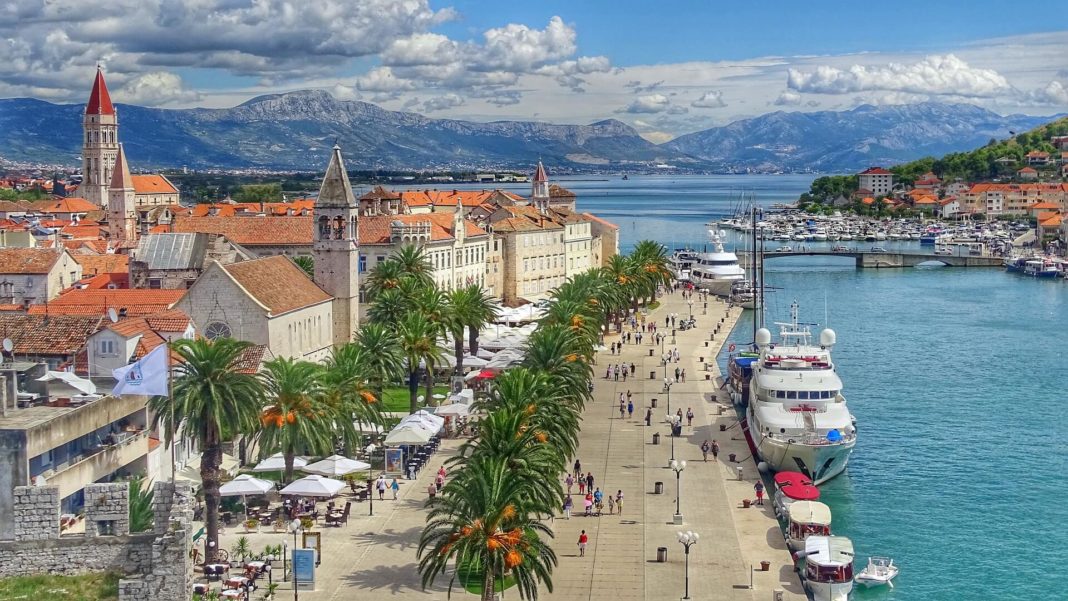The compact and picturesque peninsula of Croatia boasts some of the most breathtaking scenery in all of Europe. The country is chock-full of natural beauty, from the towering peaks of the central Dinaric Alps to ancient caves, pristine lakes, and verdant forests galore. Top-rated attractions in Croatia are plentiful, and they’re enough to keep you busy for a while. Here are some of the best places to visit if you’re looking for something unique in Croatia.
1. Dubrovnik Old Town Walls
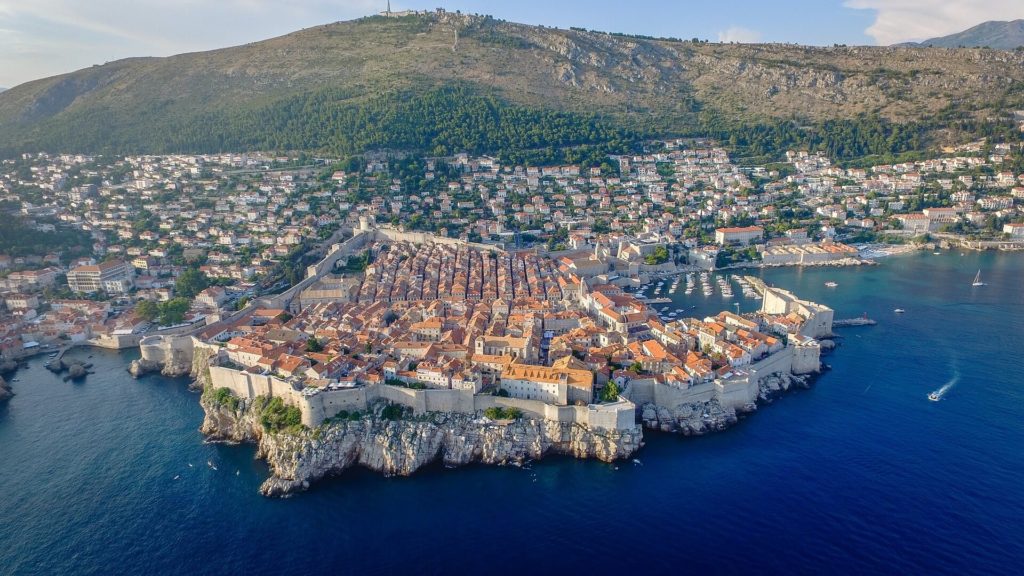
The Dubrovnik Old Town Walls, encircling the historic center of Dubrovnik in Croatia, are an iconic symbol of the city’s rich history and architectural prowess. Built between the 12th and 17th centuries, these formidable walls, standing at about 25 meters high and featuring a thickness ranging from 4 to 6 meters, served as a defensive fortification against invasions and sieges. Adorned with several forts and towers, including the prominent Minceta Tower and Fort Lovrijenac, the walls offer breathtaking panoramic views of the city and the azure Adriatic Sea, providing visitors with a glimpse into Dubrovnik’s storied past and scenic beauty.
Designated as a UNESCO World Heritage Site in 1979, the Dubrovnik Old Town Walls continue to captivate tourists and history enthusiasts alike. Beyond their historical and cultural significance, the walls have gained international fame as a filming location for the acclaimed TV series “Game of Thrones,” drawing fans of the show to experience the allure of the real-life King’s Landing. Visitors can stroll along the walls, immersing themselves in the city’s medieval ambiance while marveling at the architectural grandeur and spectacular vistas that have made the Dubrovnik Old Town Walls a must-see attraction for travelers exploring the Adriatic region.
2. Diocletian’s Palace in Split
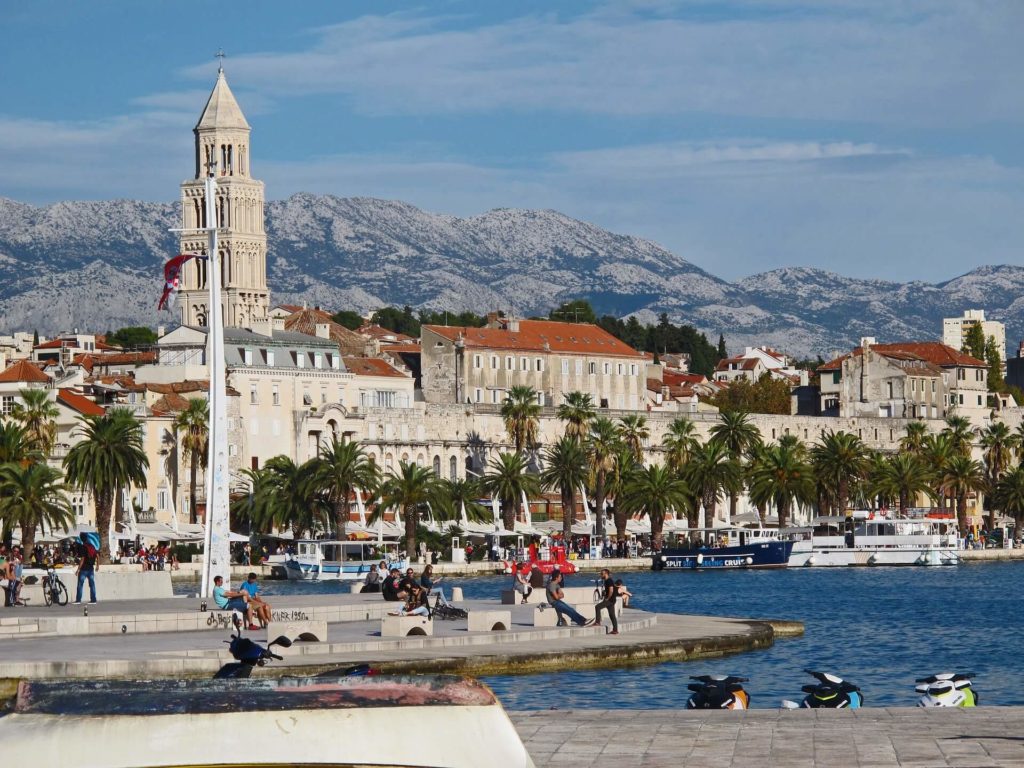
Diocletian’s Palace is an ancient palace built by the Roman Emperor Diocletian at the turn of the 4th century AD. Located in the heart of the city of Split, Croatia, the palace is one of the most imposing Roman ruins in existence. The palace was not only a luxurious residence for Diocletian but also served as a military fortress and a fortified town. The palace is renowned for its well-preserved architecture, featuring a harmonious blend of Roman, Hellenistic, and early Christian elements, making it a unique historical and cultural landmark.
Today, Diocletian’s Palace is a UNESCO World Heritage Site and stands as the living, breathing heart of Split. The palace complex encompasses an intricate network of narrow streets, charming squares, medieval buildings, and ancient gates, offering visitors a fascinating journey through history. It also houses a variety of shops, restaurants, and residences, making it a vibrant and bustling part of the city. The subterranean levels of the palace feature well-preserved cellars and chambers, adding to the allure of this extraordinary site. Whether exploring its architectural marvels, soaking in its rich history, or simply savoring the vibrant atmosphere, a visit to Diocletian’s Palace is a journey back in time, offering a captivating blend of ancient grandeur and modern vitality.
3. Hvar Town
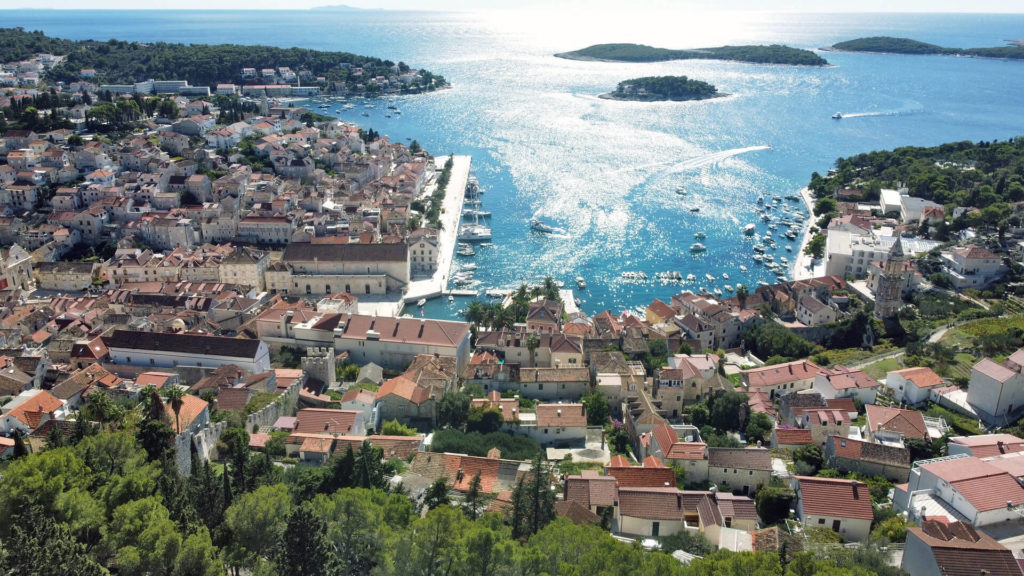
Hvar, known as the “island of lavender,” is a town and port situated on the island of Hvar, part of Split-Dalmatia County, Croatia. The town boasts a rich historical and cultural heritage, having been a significant center for trade and culture in the Adriatic. The municipality of Hvar covers various settlements and is a renowned tourist center, attracting visitors with its mild Mediterranean climate, stunning beaches, and vibrant cultural scene. The town has a long and distinguished history, evident in its well-preserved architecture, including a 700-year-old theater, noble houses, and public buildings dating back to the 15th to 17th centuries. The town’s picturesque port, with its marina hosting various events, is a popular destination for vacationers, especially during the summer season. The island is also known for its cultivation of lavender, winemaking, and its role as an important base for trade and naval activities in the Adriatic. The town’s rich heritage and natural beauty make it a must-visit destination in Europe.
To add to the charm of Hvar, the town features a large public square open to the sea, a vibrant nightlife with all-night discos, and a range of accommodation options, from luxury hotels to quaint hostels. Additionally, the town offers a variety of activities, including exploring the old town streets, sailing to the nearby Pakleni Islands, swimming in the town’s beaches, and admiring the stunning views from Hvar Fort. The island’s idyllic location, rich cultural offerings, and pleasant climate make it an attractive destination, especially during the shoulder seasons of April to early June and mid-September to October when the crowds are smaller and prices are more budget-friendly. Visitors can reach Hvar by ferry from the coastal city of Split, which is also a worthy destination to explore before heading to the island.
4. Plitvice Lakes National Park
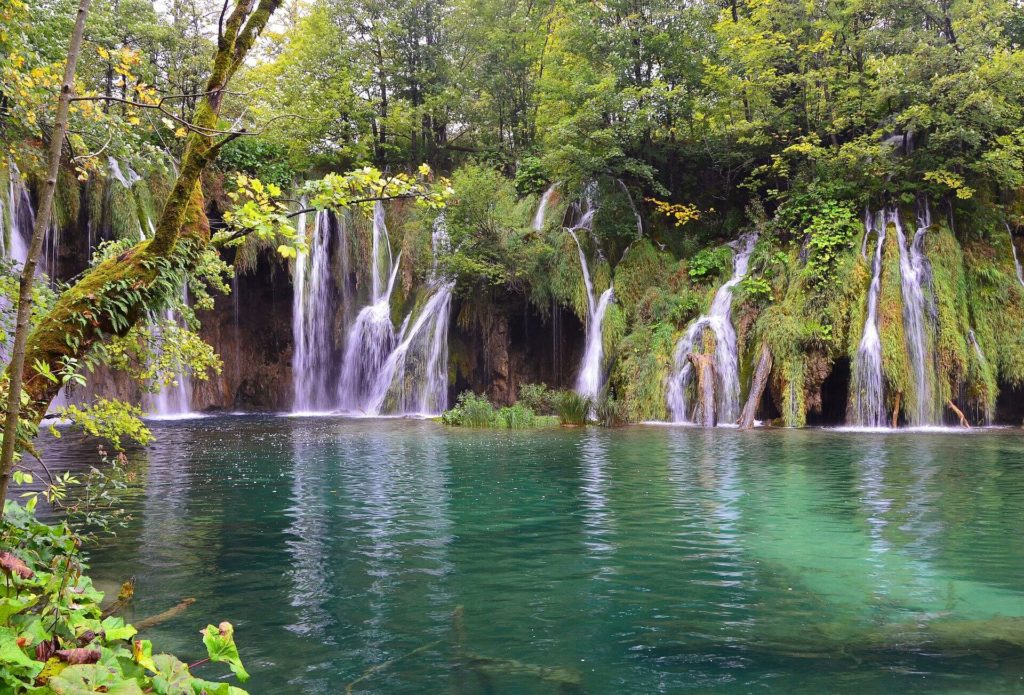
Plitvice Lakes National Park is a UNESCO World Heritage Site renowned for its exquisite natural beauty, comprising a series of cascading lakes, waterfalls, and lush forests. Located in central Croatia, this enchanting park attracts nature enthusiasts and photographers from around the world. The interconnected lakes, adorned with vivid azure and green hues, create a mesmerizing landscape that captivates visitors throughout the year.
The park offers a network of well-maintained wooden walkways and hiking trails, allowing visitors to explore the diverse flora and fauna while marveling at the crystalline waters and the park’s sixteen terraced lakes. The park’s most famous feature is the Veliki Slap, a 78-meter-high waterfall that serves as a stunning centerpiece to the park’s natural wonders. Visitors can also take boat rides across the largest lake, Kozjak, to fully immerse themselves in the park’s ethereal ambiance. Whether visiting in the vibrant colors of spring, the lush greenery of summer, or the captivating frost of winter, Plitvice Lakes National Park offers a truly unforgettable experience, making it a must-see destination for anyone exploring Croatia’s natural treasures.
5. Zagreb’s Gornji Grad
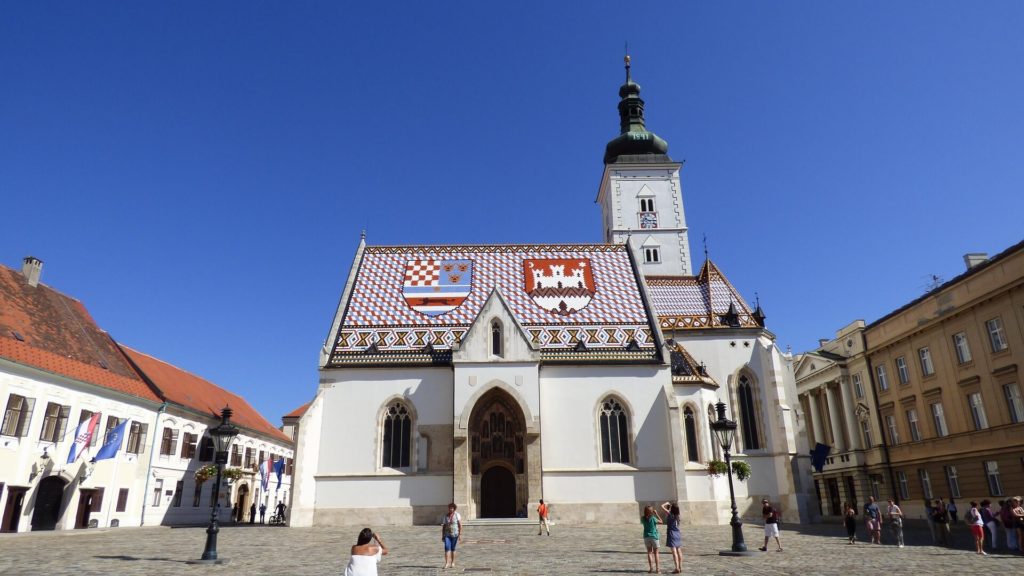
Gornji Grad, also known as the Upper Town, is the historic core of Zagreb, Croatia’s capital city. This picturesque area is characterized by its charming cobblestone streets, historic buildings, and medieval architecture, offering visitors a glimpse into Zagreb’s rich past and cultural heritage.
Key highlights of Gornji Grad include the iconic St. Mark’s Church with its colorful tiled roof, the Lotrščak Tower, which provides panoramic views of the city, and the medieval Stone Gate, which houses a religious shrine and is steeped in local folklore. The area is also home to numerous museums, galleries, cozy cafes, and artisan shops, making it a delightful place to explore on foot.
Gornji Grad’s timeless ambiance, historical significance, and architectural beauty make it a must-visit destination for travelers seeking to immerse themselves in Zagreb’s captivating blend of old-world charm and contemporary vibrancy.
6. Sailing around Kornati National Park
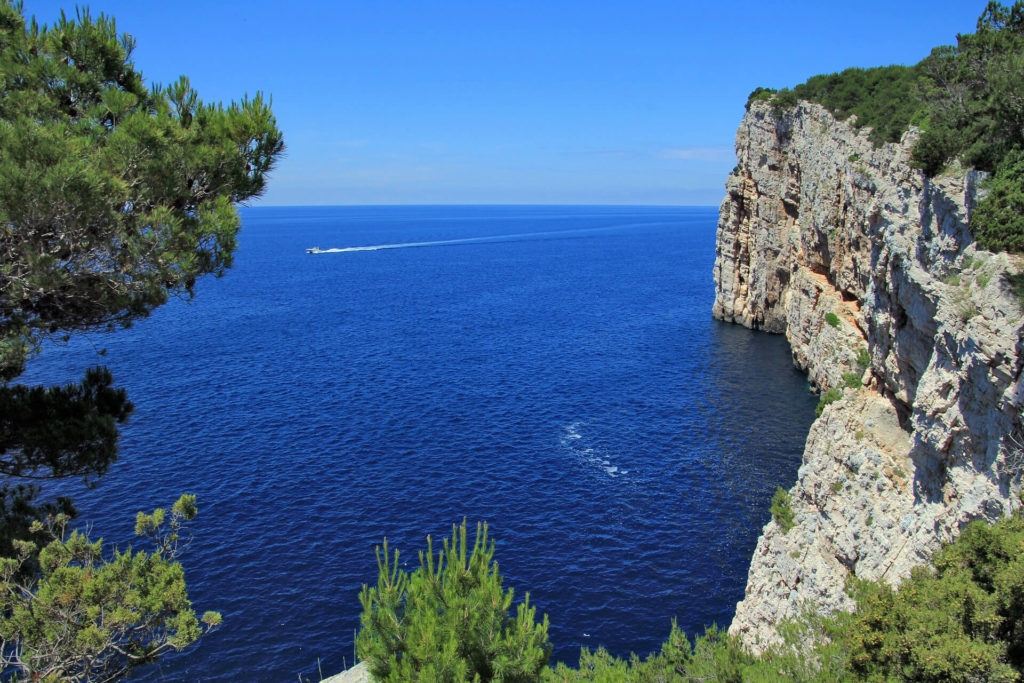
Sailing around Kornati National Park offers a unique and breathtaking experience for nature enthusiasts and seafaring adventurers. With its 89 mostly uninhabited islands, islets, and reefs, the park presents a stunning labyrinth of rugged coastline, crystal-clear waters, and diverse marine life, making it a paradise for sailing and exploring.
Sailors can revel in the park’s pristine beauty, anchoring in secluded coves, snorkeling in the azure Adriatic, and basking in the tranquility of this unspoiled maritime wonderland. The park’s jagged, barren landscapes contrast with the vibrant blue of the sea, creating a mesmerizing backdrop for a sailing adventure. Additionally, the park’s designated mooring spots and marinas provide convenient facilities for boaters, ensuring a comfortable and enjoyable journey through this remarkable archipelago.
Exploring Kornati National Park by sailboat or yacht offers a unique perspective on Croatia’s natural splendor and is an unforgettable experience for anyone seeking to immerse themselves in the Adriatic’s pristine marine environment.
7. Pula’s Roman Arena
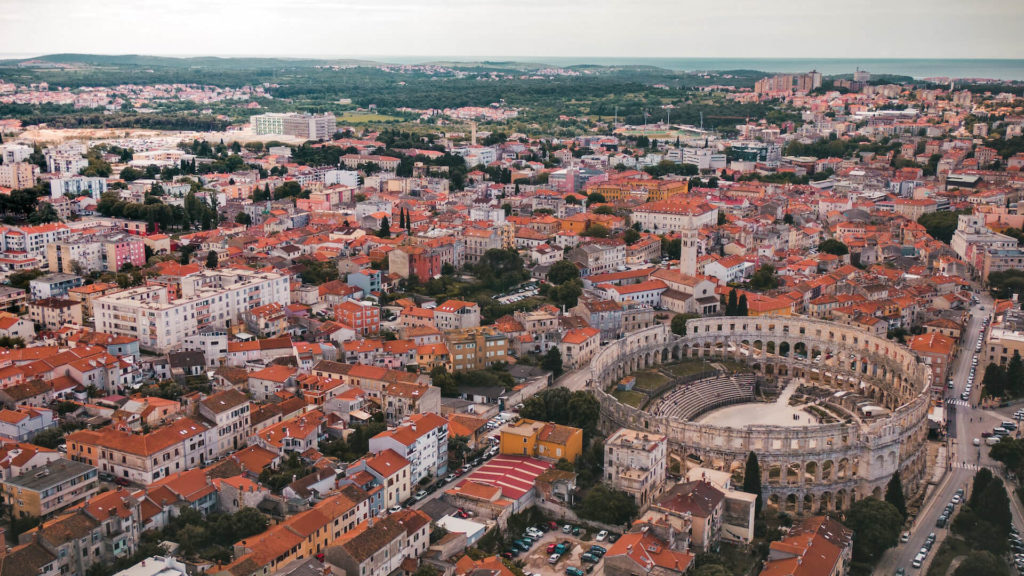
The Pula Arena is one of the most well-preserved Roman amphitheaters in the world and is a true testament to the architectural and engineering prowess of the ancient Romans. Constructed in the 1st century AD during the reign of Emperor Vespasian, the arena once hosted gladiator contests, chariot races, and other public spectacles, drawing thousands of spectators to its grand stands.
Today, the Pula Arena stands as a striking symbol of Pula’s rich history and is a popular venue for concerts, film festivals, and historical reenactments. Visitors can explore the arena’s well-preserved interior, ascend to the top tiers for panoramic views of the city, and learn about its fascinating history through on-site exhibitions and displays. The arena’s imposing architecture and historical significance make it a must-see attraction for anyone visiting Pula, offering a captivating glimpse into the ancient world of entertainment and culture.
8. Zadar’s Romanesque Churches
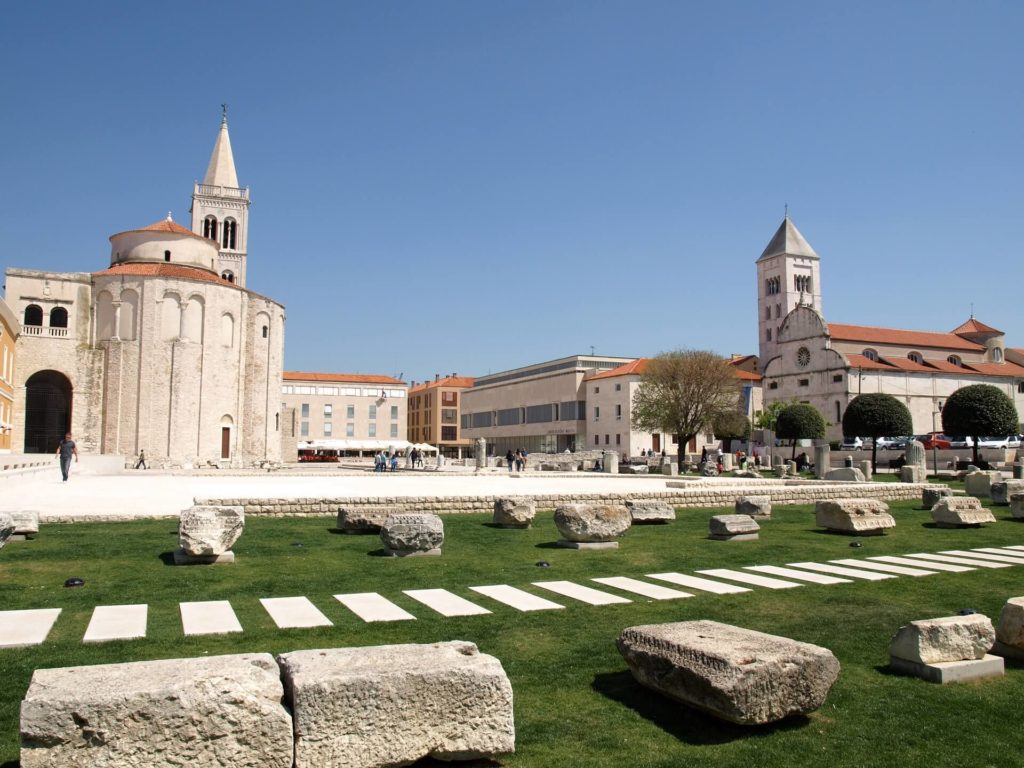
Zadar is renowned for its rich historical and architectural heritage, particularly its Romanesque churches that reflect the city’s medieval legacy. The Romanesque style, characterized by its rounded arches and sturdy construction, is prominently showcased in several churches in Zadar.
- St. Donatus Church: This iconic church, dating back to the 9th century, is one of the most significant examples of Byzantine-influenced Romanesque architecture in Croatia. Its cylindrical shape and minimalistic design are a testament to the architectural ingenuity of the time.
- St. Anastasia’s Cathedral: Built in the 12th and 13th centuries, this cathedral is an outstanding representation of Romanesque and Gothic architecture. Its imposing exterior and well-preserved interior make it a must-visit for architectural enthusiasts and history buffs.
- St. Mary’s Church: Situated on the eastern side of the old Roman forum, this church features a Romanesque bell tower and an elegant façade, exemplifying the architectural grandeur of the Romanesque period.
These Romanesque churches not only serve as architectural marvels but also stand as testaments to Zadar’s enduring cultural and historical significance. Visiting these churches offers a profound insight into the city’s medieval past and the evolution of architectural styles in the region.
9. Zlatni Rat Beach
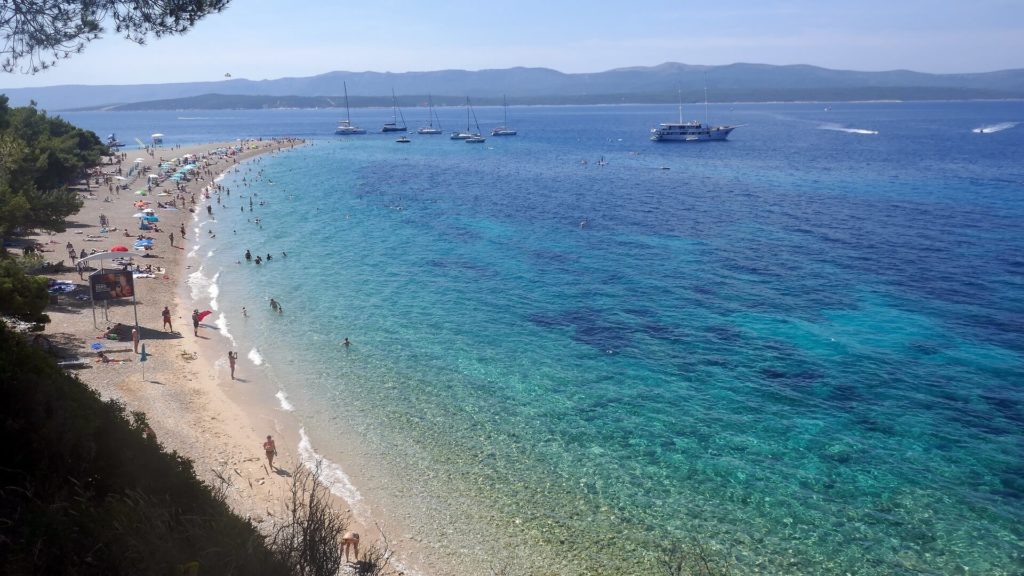
Zlatni Rat Beach, located on the southern coast of the Croatian island of Brač, is a geographical marvel that is as beautiful as it is unique. The beach is renowned for its ever-changing shape, influenced by winds, currents, and tides. The clear blue waters are perfect for a refreshing swim on a hot day, and the pebble beach provides a comfortable lounging area from which you can bask in the Mediterranean sun.
For water sports enthusiasts, Zlatni Rat is a dream destination. The Maestral, a predictable afternoon wind in the Adriatic, offers excellent conditions for windsurfing and kitesurfing. If you prefer a slower pace, you can enjoy snorkeling in the clear water, where the sea life is vibrant and inviting. Furthermore, the beach is well-equipped with amenities, including beach bars and restaurants, where you can enjoy local delicacies and cool drinks. Rental facilities for beach equipment are also available, ensuring you have everything you need for a perfect day on the shore.
To fully enjoy Zlatni Rat without the crowds, consider visiting during the shoulder season in September or October. The weather is still pleasant, and with fewer tourists, you’ll have more space to yourself. Moreover, the beach is not just about sunbathing and water activities; it’s close to historical attractions as well. You can explore the nearby ruins of a Roman Villa Rustica or search for the “stone of happiness” among the pebbles.
In essence, Zlatni Rat Beach is a destination that offers more than just a typical beach experience. Its unique shape and dynamic landscape, combined with the crystal-clear Adriatic Sea and the array of activities available, make it an irresistible spot for any traveler. When you visit, you’ll understand why this isn’t just another beach—it’s a natural wonder that captures the hearts of all who set foot on its pebbles.
10. Visit Korcula
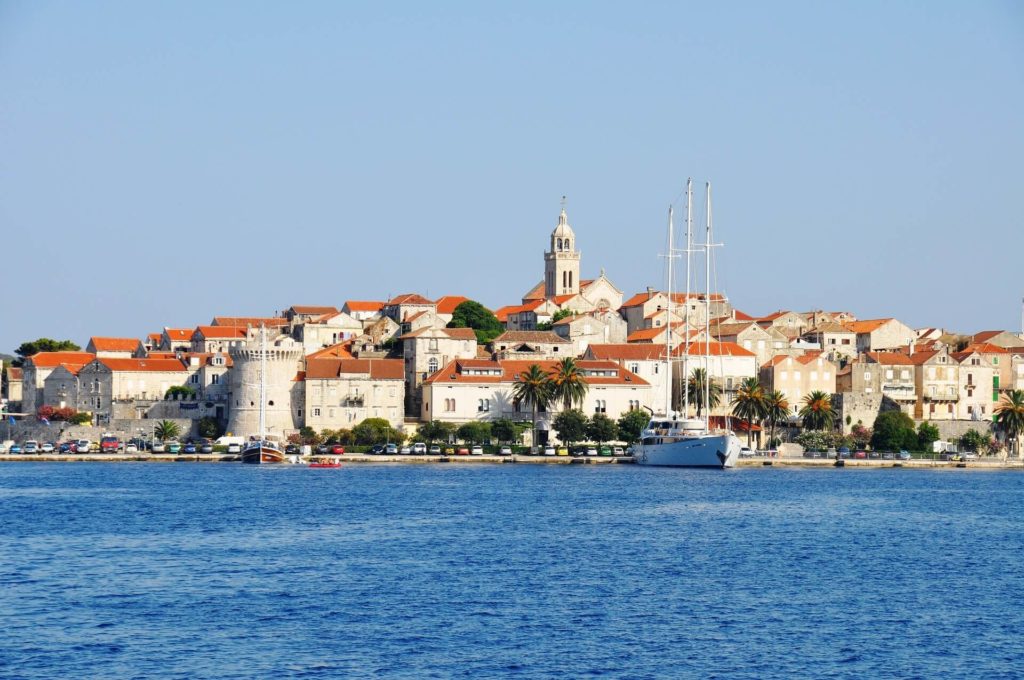
Korčula Island in Croatia is an enchanting destination that promises a vacation filled with diverse experiences. Known for its exceptional wines, including the indigenous varieties Grk and Pošip, the island offers a vibrant culture and an array of exciting activities. Its blend of natural beauty, historical charm, and culinary delights ensures a memorable journey for any traveler, whether it’s a first visit to Croatia or a return trip.
The island’s reputation as the “wine island” stems from its vineyards that stretch along the Adriatic coastline, offering wine enthusiasts unique varietals to explore. Beyond its wine culture, Korčula caters to a variety of interests, from witnessing the captivating Moreška sword dance to discovering hidden beach gems. For those seeking adventure, the island’s picturesque landscapes are perfect for biking through vineyards that meet the sea.
When it comes to accommodations, Korčula has something for everyone, from the bustling Korčula Town with its ancient architecture to the serene villages of Lumbarda and Žrnovo nestled among vineyards and olive groves. The island offers a range of lodging options, including the luxurious Lešić Dimitri Palace, a meticulously restored 18th-century bishop’s palace that combines history with modern sophistication.
With its stunning old city, collection of hidden beaches, olive groves, and unique dining specialties, Korčula is a top summer destination in Croatia. Although the island is well-known, it manages to retain a sense of tranquility without the overcrowding seen in other popular locales. To truly experience all that Korčula has to offer, it’s recommended to stay for at least three days in Korčula town or a full week to explore the entire island and nearby attractions such as Pelješac and Mljet.
September is considered the best time to visit Korčula, offering summer weather without the peak season crowds. The island is also home to several food, wine, and music festivals during the summer months, adding to its allure. For those planning a Croatian vacation, including a visit to Korčula on your itinerary is a decision you’re unlikely to regret, as it embodies the Mediterranean as it once was, brimming with tradition and beauty.
11. Mljet National Park
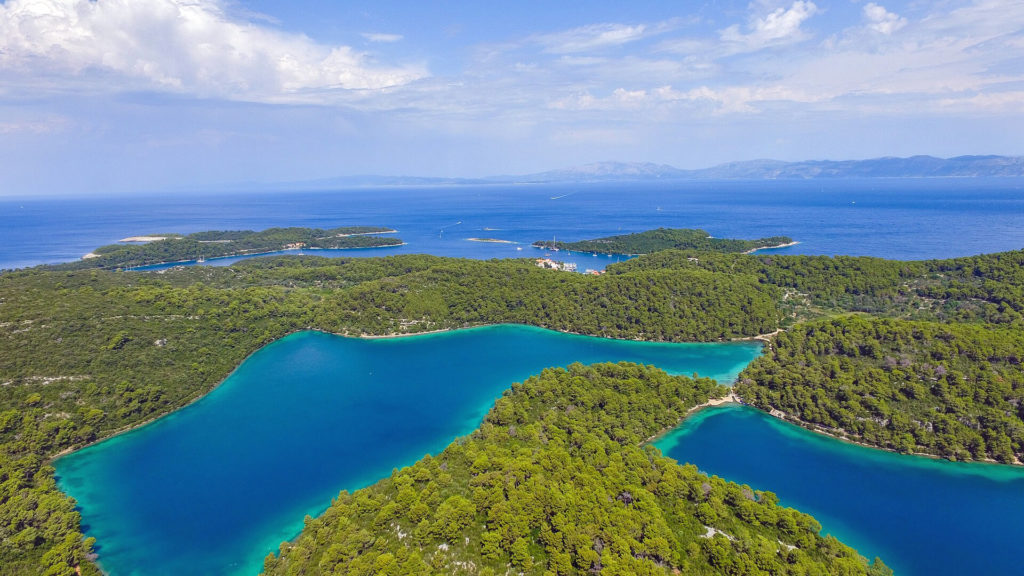
Mljet National Park is a serene and pristine natural wonder located on the island of Mljet, which is situated in the southern Dalmatian region of Croatia, far south of the country and west of the famous city of Dubrovnik. This enchanting park occupies the northwestern part of the island and is renowned for its untouched and protected natural beauty. It is a sanctuary where one can immerse themselves in the tranquility of nature, far from the hustle and bustle of urban life.
At the heart of Mljet National Park lie two stunning saltwater lakes, Veliko Jezero (Big Lake) and Malo Jezero (Small Lake), which stretch for about 4 kilometers. In the Big Lake, visitors will discover a small islet called Melita (Sveta Marija) that is home to a significant historical structure, a 12th-century Benedictine monastery that has now been transformed into a café/restaurant. This picturesque islet is reachable by boats that regularly sail from both sides of the lake.
The park offers a variety of activities for visitors. The lakes are encircled by well-marked paths, making it perfect for cycling or strolling along the shaded footpaths. Kayaking is also available, allowing visitors to paddle around the serene waters of the lakes. For those who enjoy hiking, the park offers trails that lead up the hills, offering breathtaking views of the Mljet coastline and the park itself. Swimming and sunbathing are popular as the water in the lakes tends to be warmer compared to the island’s seashores.
Access to the park is predominantly through the villages of Pomena and Polače. While there are no official entrance gates, visitors are expected to purchase entrance tickets at kiosks located in these villages. Accommodations and dining options are available near the park, including charming apartments and local restaurants serving delicious cuisine.
Mljet Island itself is steeped in history and legend. It is said to be the island “Melita” where Saint Paul was shipwrecked and also claims to be the mythical Ogygia from Homer’s Odyssey. Near Babino Polje, the largest settlement on the island, lies a limestone cave associated with the story of Odysseus and the nymph Calypso.
Nearly 90% of Mljet National Park is covered in forest, creating an intoxicating natural environment that’s home to a rich diversity of flora and fauna. The Aleppo Pine forests, extending from the sea’s bed to the highest points of the island, produce a mesmerizing scent that lingers in the air, enchanting first-time visitors and regulars alike.
Mljet National Park is a traveler’s haven, offering a slice of paradise with its lush landscapes, historical sites, and peaceful atmosphere. It is a place where one can truly disconnect, relax, and enjoy the splendor of nature in one of Croatia’s most alluring islands.
12. Rovinj
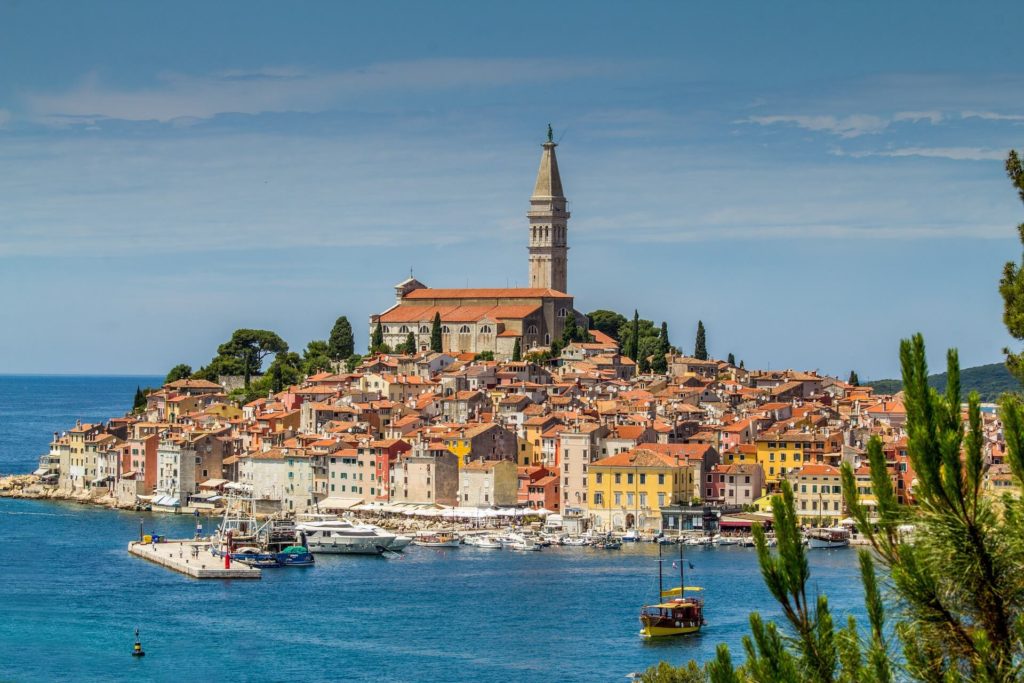
Rovinj, Croatia, is a picturesque city situated on the north Adriatic Sea with a population of around 12,968. It is known for its charming old town, cobblestone streets, colorful houses, and vibrant harbor. The town offers stunning views, cultural attractions, beautiful beaches, and outdoor activities like hiking and cycling. Rovinj is also a popular tourist resort with a humid subtropical climate, making it an ideal destination for travelers seeking romance, culture, and relaxation.
Key Highlights:
- Romance: Rovinj offers a romantic atmosphere, perfect for leisurely walks, stunning sunsets, and candlelit dinners at seafront restaurants.
- Culture: The city has a rich history influenced by ancient Romans, Venetians, and Austrians, with historic sights like the Church of St. Euphemia and the Venetian-style clock tower.
- Beaches: Visitors can enjoy crystal-clear waters and breathtaking vistas at stunning beaches such as Monte Mulini Beach Club, Lone Bay Beach, and the serene beaches of the Golden Cape forest.
- Cosmopolitan Vibe: Rovinj offers modern and cosmopolitan hotels, including Hotel Lone, Monte Mulini, and Grand Hotel Park, adding to the town’s appeal [2].
Travel Information:
- Location: Rovinj is located on the western coast of the Istrian Peninsula, making it an excellent base for exploring other Istrian towns and landmarks.
- Accessibility: The town is easily accessible from major cities like Zagreb and Venice, with airports in Pula, Krk, Trieste, Treviso, Venice, Ljubljana, and Zagreb within a 3-hour drive.
- Transportation: Traveling by car is the most convenient way to reach Rovinj, with excellent road connections in Istria. Pula Airport is the closest airport, with low-cost airlines offering flights from various European destinations.
Visitors to Rovinj can enjoy a wide range of activities, from exploring the old town and historic sights to relaxing on beautiful beaches and indulging in the town’s vibrant cultural scene. Whether by land, air, or sea, Rovinj offers a unique and memorable experience for all types of travelers.
13. Brijuni National Park
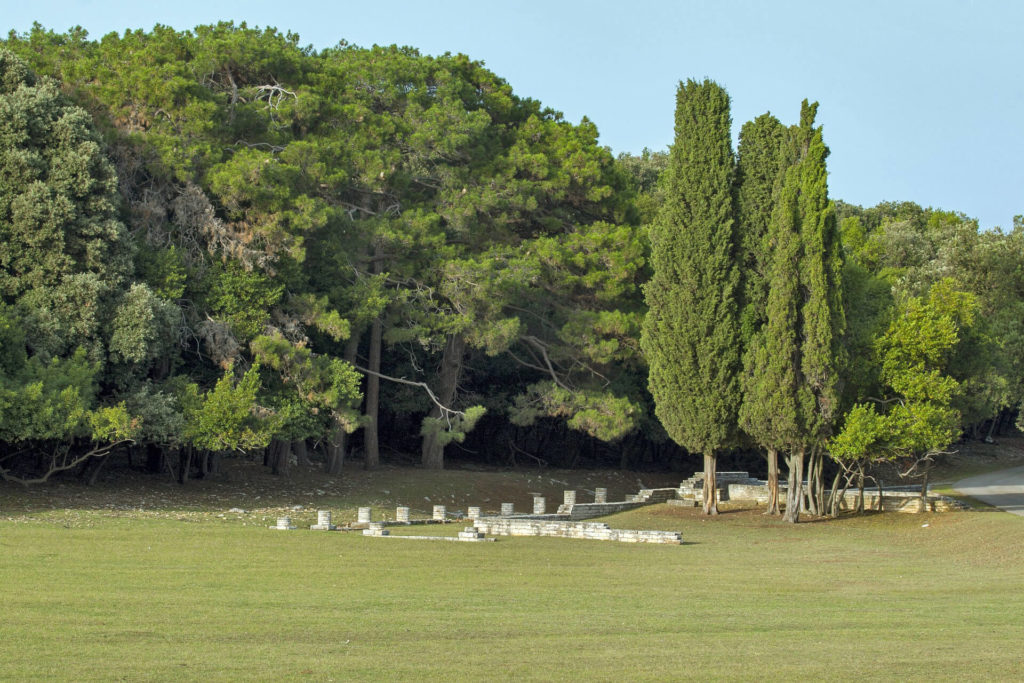
Brijuni National Park, located along the coast of western Istria, Croatia, is a captivating destination that offers a unique blend of natural, historical, and cultural wonders. The park comprises 14 islands, with Veliki Brijun being the largest and most visited. This archipelago was declared a national park on November 1, 1983, and has since been a place where visitors can indulge in an array of activities while being surrounded by unspoiled beauty.
Natural Attractions and Activities
- Diverse Flora and Fauna: Brijuni National Park is home to a fascinating range of flora and fauna, including an ornithological park and various indigenous and exotic animal species within the Safari Park.
- Sports and Recreation: For those seeking active pursuits, the park provides opportunities for golf, tennis, kayaking, scuba diving, snorkeling, cycling, and exploring the park in electric cars.
- Beaches and Swimming: Visitors can bask in the sun on the idyllic beaches, with Saluga Bay and Sveti Jerolim Beach being notable spots for a relaxing day amid the park’s serene environment.
- Wildlife and Nature Spotting: With numerous walking trails, the park is ideal for nature enthusiasts who wish to observe the rich wildlife and birdlife in their natural habitat.
Cultural and Historical Heritage
- Archaeological and Architectural Sites: The islands are dotted with archaeological sites, including Roman villa ruins in Verige Bay, as well as architectural heritage that tells the story of the region’s past.
- Museum and Exhibitions: Visitors can explore the park’s museum and permanent exhibition displays, which offer insights into the islands’ history and natural heritage.
- Tito’s Cadillac and Koki the Cockatoo: For a touch of historical charm, you can see Tito’s Cadillac and meet Koki, the famous yellow-crested cockatoo, which is one of the rare examples that live up to 100 years.
14. Trogir
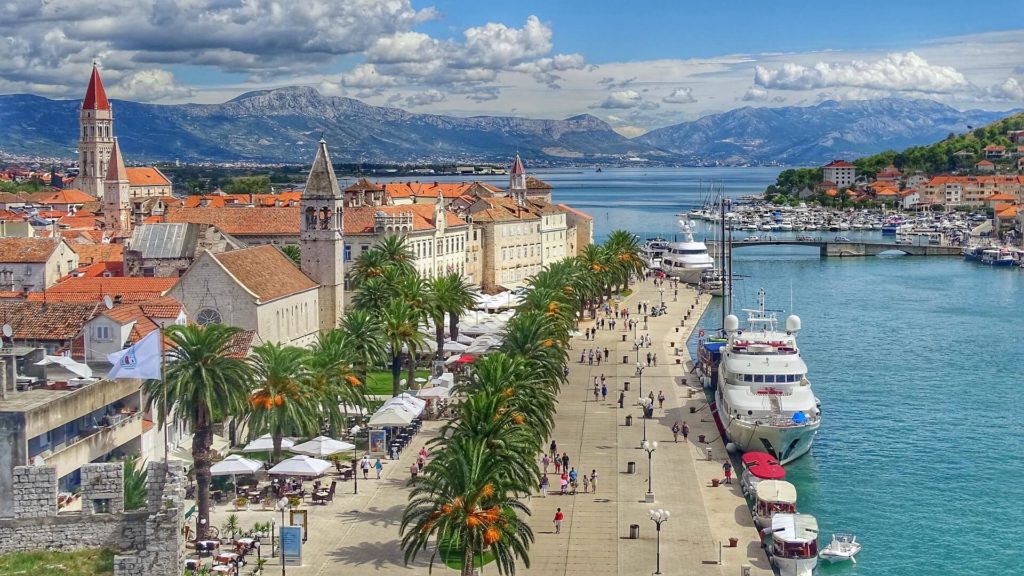
The charming coastal town of Trogir in Croatia, which is located on the Dalmatian coast and is widely regarded as one of the best places to visit along this stretch of coast, is a wonderful vacation destination that visitors should not miss. Trogir has had periods of rule by the Greeks, Romans, Hungarians, and Venetians throughout its long and eventful history, which dates all the way back to the year 380 BC when it was first established as a settlement.
The town of Trogir was recognized as a UNESCO World Heritage Site in 1997, and since that time it has provided visitors with a wide variety of exciting opportunities to enjoy themselves. In addition to its many top hotels and other accommodation options, tourists have a wide variety of options to choose from when looking for a good restaurant that specializes in seafood or when shopping for souvenirs.
The majority of the town’s historic sites can be found within the confines of the town walls, which date back to the 1400s, thanks to the careful preservation of the area’s many historic buildings. This means that history enthusiasts as well as tourists have plenty of places to visit.
The medieval streets of the town are lined on both sides with beautiful examples of Romanesque and Renaissance architecture. The promenade that runs along the water’s edge is also lined with these types of buildings. The Trogir Cathedral, also known as the Cathedral of St. Lawrence, the Cipiko Palace, and the Church of St. Peter are three of the most notable of these buildings.
15. Rijeka

It is highly recommended that you include Rijeka, a charming city that many visitors to the Dalmatian Coast skip over in favor of other destinations, on your itinerary for your trip to Croatia. Those who do choose to travel to this historically significant port city will find that in addition to the benefit of having to contend with fewer crowds, there is an abundance of attractions and activities available to them.
The exploration of the well-preserved cobbled streets and lanes of the Old Town is one of the highlights. Each of these streets and lanes is lined with magnificent examples of townhomes and dwellings, as well as old shops and places of trade, that were constructed in the 1700s.
Be sure to stop by the magnificent Trsat Castle (also known as Gradina Trsat), which was constructed high above the town in the 13th century and is reachable via a charming pathway that also leads to the nearby Church of Our Lady of Trsat (Gospa Trsat). When you consider that this charming town is home to a number of noteworthy art galleries and museums in addition to hosting Croatia’s largest carnival and the Risnjak National Park, it becomes clear that there is no shortage of reasons to pay it a visit.
16. Sibenik
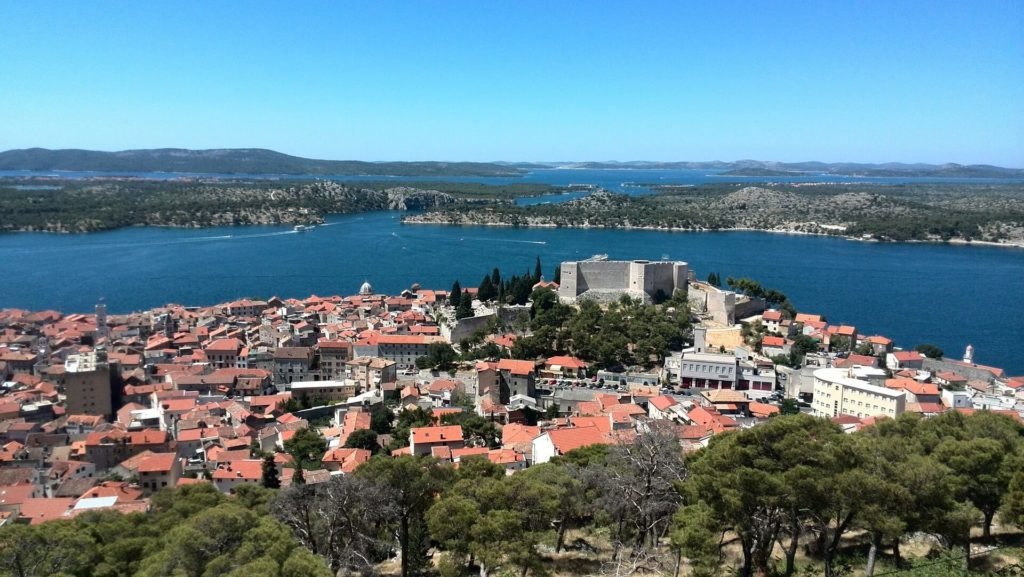
The charming city of Sibenik in Dalmatia, which has a history that dates all the way back to the 11th century and is located in Croatia, has a lot to offer visitors to the country. Although it may not be as busy as some of the other popular destinations in this stunning country, there is certainly no shortage of enjoyable things to do here.
First, you should look around the historic Old Town center, which has been kept in pristine condition. The 15th and 16th centuries produced some of the most exquisite architecture in this area, which also features a great number of attractions well worth seeing. Visit the UNESCO World Heritage Site and one of the most beautiful churches in all of Croatia, the Cathedral of St. James (Katedrala Sv Jakova), which dates back to the 15th century.
Both the remains of St. John’s Fortress and the equally important St. Michael’s Fortress are worthy of a visit. The former is located high atop a hill overlooking the town, and the latter is known for the traditional cultural performances that are held on its delightful open-air stage.





